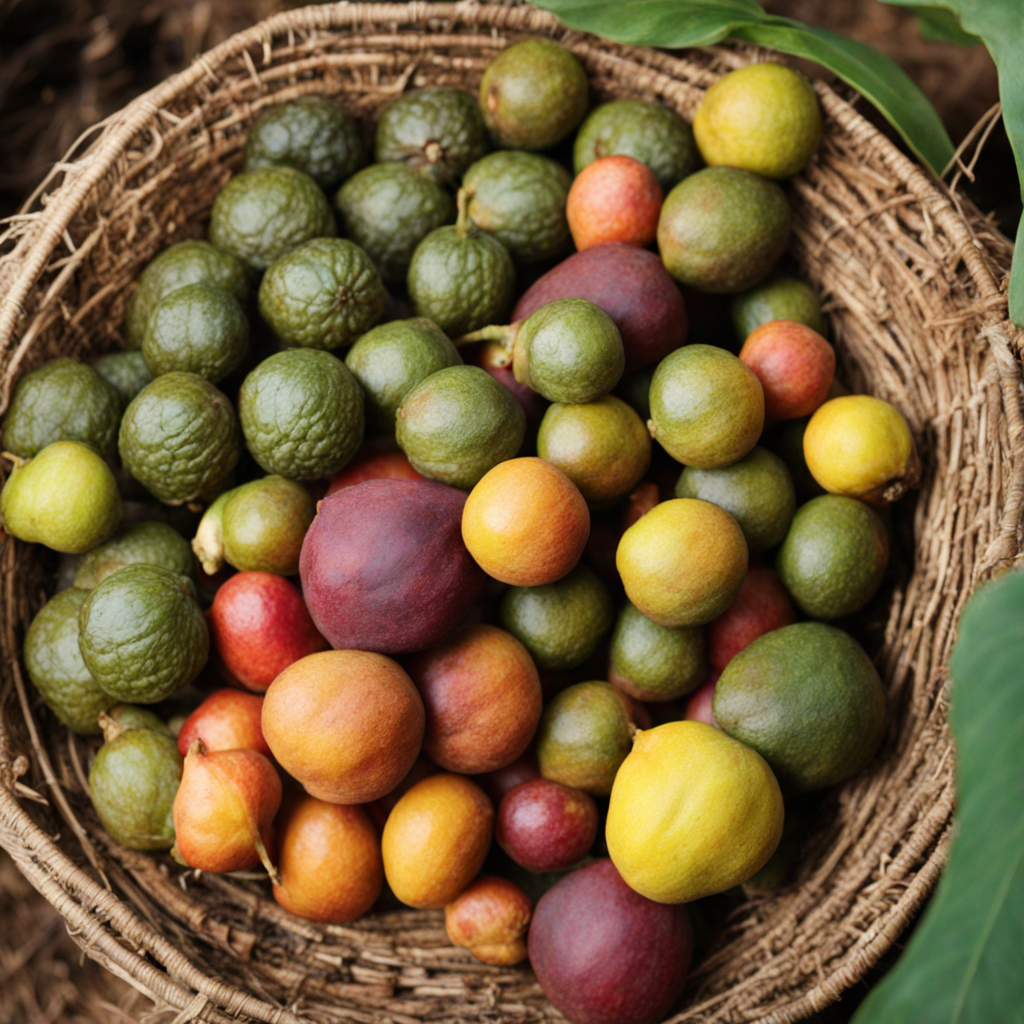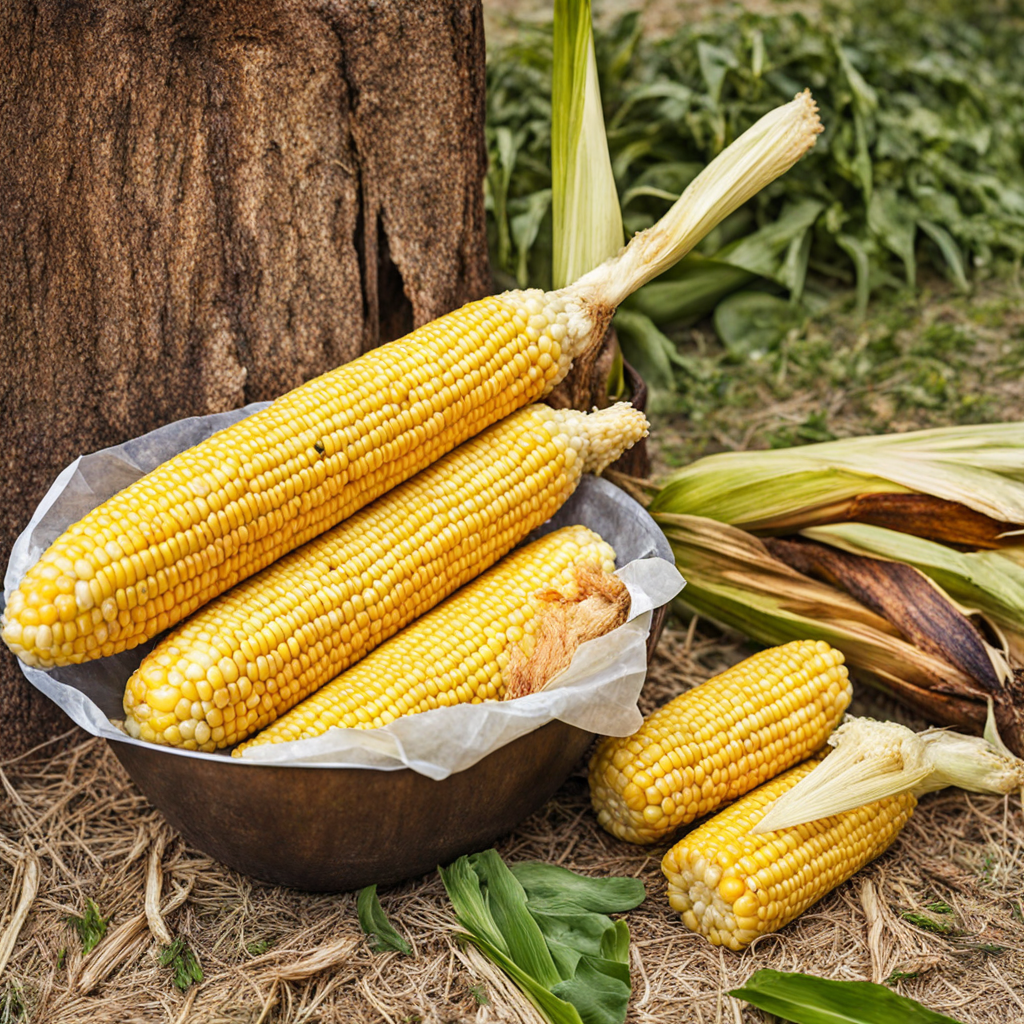Nyimo Beans
Nyimo beans, also known as Bambara groundnuts, are a nutrient-dense legume native to Zimbabwe and widely appreciated for their unique flavor and versatile uses. These small, round beans come in a variety of colors, including brown, yellow, and speckled varieties, each boasting a slightly different taste profile. When cooked, they develop a rich, earthy flavor reminiscent of a cross between peanuts and chickpeas, with a creamy texture that makes them a delightful addition to various dishes. Their nutty sweetness pairs well with spices, herbs, and other ingredients, making them a versatile choice for both savory and sweet preparations. In traditional Zimbabwean cuisine, Nyimo beans are often used in stews, soups, and salads, where they absorb the flavors of accompanying spices and vegetables. They can also be roasted and eaten as a snack, providing a crunchy and satisfying treat. Due to their high protein and fiber content, Nyimo beans are a popular ingredient for those seeking to incorporate healthier options into their diets. The beans can be ground into flour, allowing for a variety of baked goods, such as bread and muffins, adding a unique twist to conventional recipes. Exploring the taste of Nyimo beans opens up a world of culinary possibilities. Their adaptability makes them an excellent ingredient for fusion dishes, where they can be combined with global flavors to create innovative meals. Whether enjoyed in traditional Zimbabwean recipes or incorporated into modern cuisine, Nyimo beans offer a delightful and nutritious option that is sure to impress anyone looking to broaden their culinary horizons.
How It Became This Dish
The History of Nyimo Beans: A Culinary Treasure of Zimbabwe #### Origins of Nyimo Beans Nyimo beans, scientifically known as *Vigna subterranea*, are a traditional legume native to southern Africa, particularly Zimbabwe. While the exact origins of Nyimo beans remain somewhat enigmatic, they are believed to have been cultivated for thousands of years, with archaeological evidence indicating their presence in the region as far back as 2000 years ago. The beans thrive in the warm, semi-arid climates of sub-Saharan Africa, making them ideally suited for the diverse ecosystems found in Zimbabwe. Nyimo beans are also known by various names in local dialects, such as "Bambara groundnuts" or "Nkhomo" in Shona. The legume is characterized by its bushy growth habit and underground pods, which contain round, nutritious beans. This unique growth pattern allows the beans to be resilient against drought and pests, making them an invaluable crop for subsistence farmers. #### Cultural Significance In Zimbabwe, Nyimo beans hold a special place not just as a dietary staple but also as a symbol of cultural identity and agricultural heritage. Traditionally, these beans are celebrated for their nutritional value and are rich in protein, fiber, and essential vitamins. They are often used in a variety of dishes, from stews and soups to snacks, and are particularly popular during the harvest season. Nyimo beans are more than just a food source; they play a vital role in communal practices and cultural rituals. They are often involved in traditional ceremonies and gatherings, where they symbolize prosperity and abundance. In many communities, sharing meals made with Nyimo beans fosters social bonds and reinforces communal ties. The act of cooking and consuming these beans is imbued with cultural significance, as it connects generations and preserves culinary traditions. Moreover, Nyimo beans have been historically associated with women’s agriculture in Zimbabwe. As a crop that is relatively easy to cultivate, they empower women farmers, allowing them to contribute to their families’ nutrition and income. The harvesting process, typically done by hand, often involves cooperation among women, further solidifying their role in the agricultural community. #### Development Over Time The history of Nyimo beans is marked by adaptability and resilience. As agricultural practices evolved, so did the cultivation of these beans. Prior to colonial interventions in the late 19th and early 20th centuries, Nyimo beans were primarily grown using traditional methods, passed down through generations. The introduction of European agricultural practices altered farming landscapes, but Nyimo beans remained a staple due to their hardiness. During the colonial period, as Zimbabwe underwent significant economic and social changes, the cultivation of Nyimo beans faced challenges. The imposition of cash crops and commercial farming led to a decline in the cultivation of indigenous crops. However, Nyimo beans continued to thrive in marginalized agricultural settings and were often planted in home gardens alongside other staple crops such as maize and sorghum. The post-independence era in the 1980s brought renewed interest in traditional crops, including Nyimo beans. Efforts were made to promote food security and improve nutritional standards among the population. Agricultural extensions encouraged farmers to diversify their crops, recognizing the importance of indigenous foods in strengthening local diets and economies. In recent years, Nyimo beans have gained popularity beyond traditional settings. With the global movement towards food sovereignty and sustainable agriculture, these beans have attracted the attention of chefs and culinary enthusiasts both within and outside Zimbabwe. They are increasingly featured in contemporary cooking, celebrated for their unique flavor, texture, and nutritional benefits. Innovative recipes have emerged that highlight Nyimo beans in an array of dishes, from salads to gourmet spreads, allowing them to transcend cultural boundaries. The rise of the organic food movement has also contributed to the resurgence of Nyimo beans. As consumers become more aware of the importance of biodiversity in food systems, these beans are often marketed as a sustainable and nutritious alternative to more commonly known legumes. Local and international organizations have worked to promote the cultivation of Nyimo beans, ensuring that farmers have access to quality seeds and resources. #### Current Challenges and Future Prospects Despite their rich history and cultural significance, Nyimo beans face several challenges in contemporary Zimbabwe. Climate change poses a significant threat to agriculture, impacting rainfall patterns and temperature, which can affect the growth of these beans. Additionally, the globalization of food systems and the dominance of cash crops have led to a decline in the cultivation of traditional crops, including Nyimo beans. Efforts are being made to address these challenges through research and community initiatives. Agricultural scientists are studying the resilience of Nyimo beans to changing climate conditions, focusing on improving yields and disease resistance. Moreover, local NGOs and community organizations are working to educate farmers about the importance of preserving indigenous crops, not only for their nutritional value but also for their role in cultural heritage and food sovereignty. The future of Nyimo beans is promising, especially as the world increasingly values local and traditional foods. The growing interest in plant-based diets and sustainable eating provides a unique opportunity for Nyimo beans to flourish in both local and global markets. By embracing their historical roots while innovating in culinary applications, Nyimo beans can continue to play a significant role in Zimbabwean cuisine and beyond. #### Conclusion Nyimo beans are more than just a food item; they are a testament to Zimbabwe's rich agricultural heritage and cultural identity. Their journey from ancient cultivation to modern culinary innovation reflects the resilience of local communities and their deep connection to the land. As Zimbabwe navigates contemporary challenges, the preservation and promotion of Nyimo beans will be crucial in ensuring food security, cultural continuity, and sustainable agricultural practices for future generations. Through the lens of Nyimo beans, we can appreciate the intricate tapestry of history, culture, and food that defines Zimbabwe.
You may like
Discover local flavors from Zimbabwe







